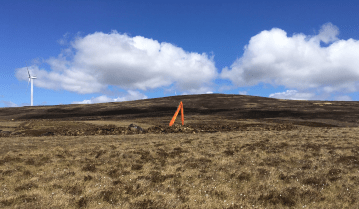Radon Risk Assessment: An Essential Step in Building Safety
20th June 2024 - Written by Nicole Hernandez
What is radon?
Radon is a naturally occurring radioactive gas that is colorless, odorless, and tasteless. It is produced by the decay of uranium in soil, rock, and water. While radon is a natural part of our environment, it becomes a health concern when it accumulates indoors, especially in residential buildings.
Radon is the second leading cause of lung cancer, after smoking, as prolonged exposure can significantly increase the risk of developing lung cancer. Therefore, it is crucial to assess the radon risk when planning and developing on land.
How do we assess radon risks?
The UK Health Security Agency (UKHSA) and British Geological Survey (BGS) have developed radon potential maps [1] which identify the likelihood of a building being affected by radon as shown in Figure 1 below.

If a radon risk is identified, it is possible that the environmental regulator will require a radon risk assessment, possibly including measurements of radon gas, to be completed as part of the planning application process. The radon risk assessment will determine the potential for a building to have elevated levels of radon and the results are then used to guide developers in implementing appropriate mitigation strategies within their development design, if necessary.
For example, I was involved in the provision of a radon risk assessment for a residential development. The primary objective was to support the discharge of the associated planning conditions by determining the necessity of radon protective measures within the new residential development, ensuring the safety and well-being of future occupants.
As part of this assessment, I analyzed the freely available Radon Risk Maps for the site. The risk maps identified that the site is located within a grid square where there is elevated radon potential (maximum indicated to be 5% – 10%) as shown by the example in Figure 2 below:


In such instances, it is prudent to complete a site-specific radon risk assessment to analyze the radon potential at the development site. This report is location-specific and includes an indicative picture of areas where radon levels are likely to be higher. The BGS provides a pictorial example of this as shown in Figure 3 below:

As you can see from Figure 3 above, the example radon report such as the site-specific radon risk assessment undertaken indicated a negligible radon risk for the proposed development site where:
- The site is located within an area where less than 1.00% of the homes are estimated to be at or above the radon action level.
- No radon protective measures were required for the proposed development at the site.
This is particularly noteworthy given the variance between online risk maps and the site specific assessment. Online risk maps for radon, such as those provided by UKHAS, offer a broad overview of radon levels across different regions. These maps are based on geological data and measurements from a wide range of properties. They show the likelihood of high radon levels in different areas, with darker colors indicating a greater chance of high levels. However, these maps provide a generalized view and may not accurately represent the radon risk at a specific location.
On the other hand, a site-specific assessment for radon involves detailed reports at a particular location. Therefore, while online risk maps for radon provide a useful starting point, they cannot replace the detailed information provided by a site-specific assessment. This is particularly noteworthy because relying solely on online risk maps could lead to an over- or under-estimation of the actual radon risk at a specific site. It highlights the importance of carrying out site-specific assessments to accurately determine radon risk and implement appropriate mitigation measures if necessary.
Final Thoughts
Radon Risk Maps allow regulators, developers and environmental consultants to make informed decisions on the need for more detailed site assessments so that associated risks from radon gas can be addressed appropriately.
While no immediate action was required in the site assessment described above, it does highlight the importance on completing a thorough and robust radon risk assessment to establish if protective measures will be necessary for proposed developments.












 Previous
Previous 
